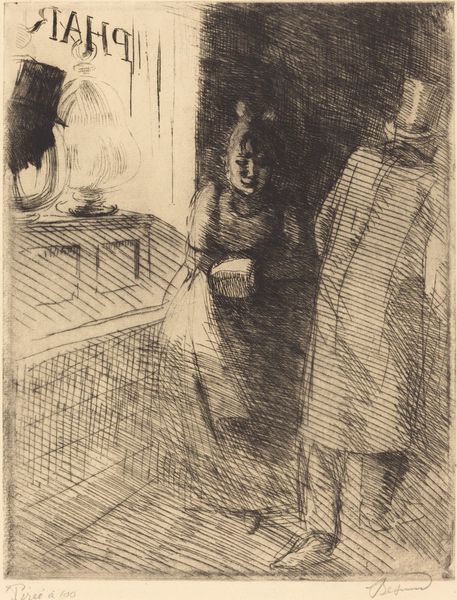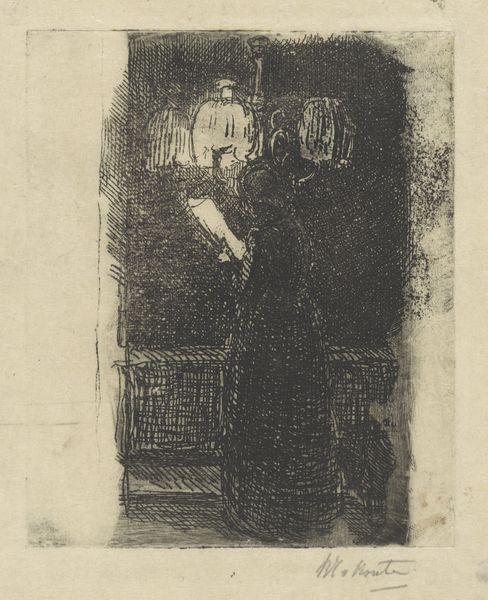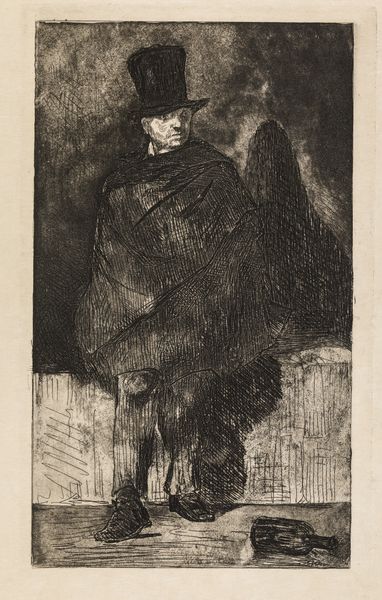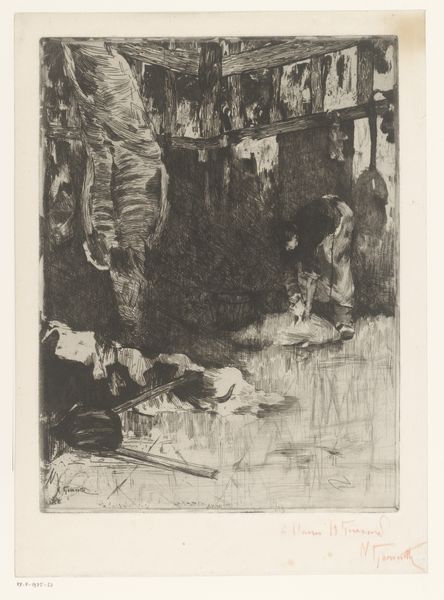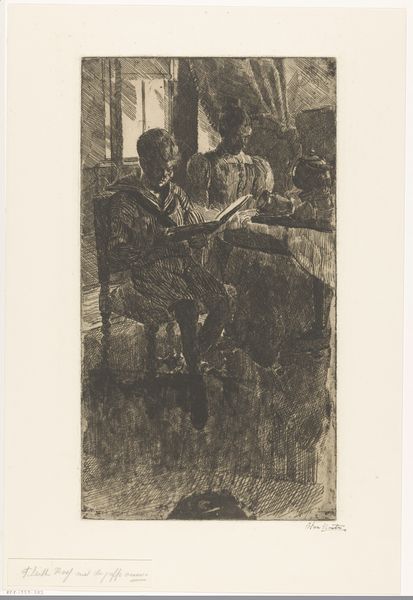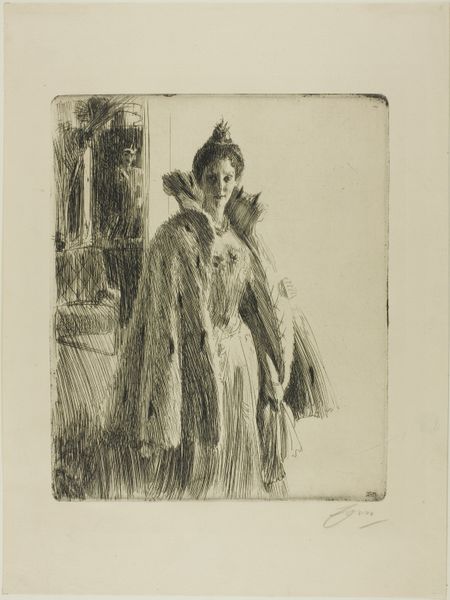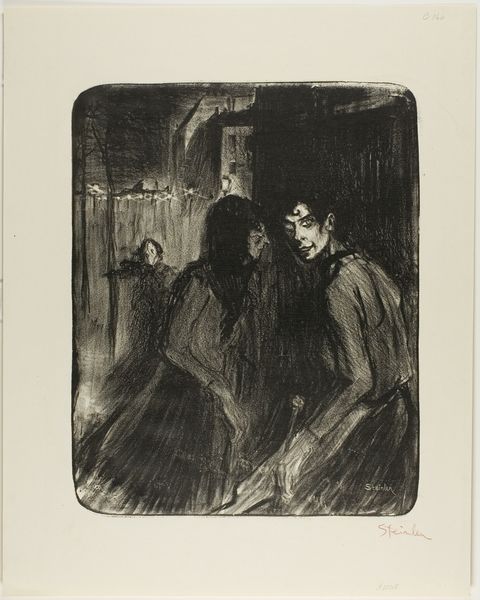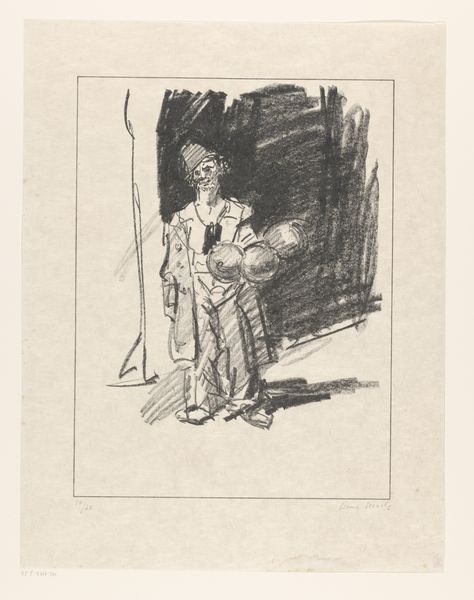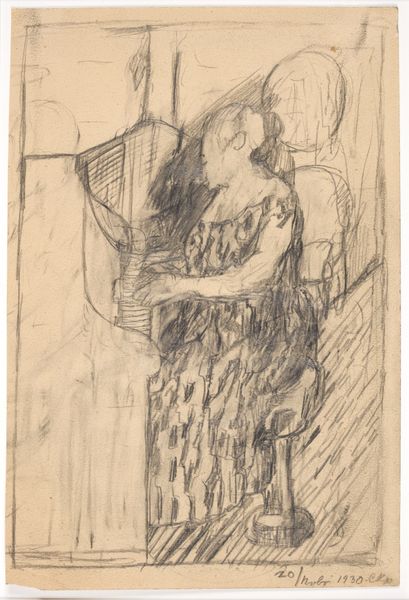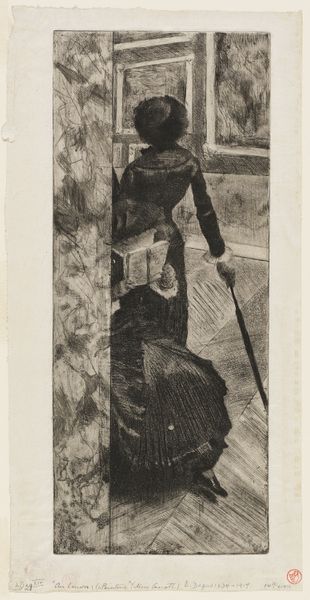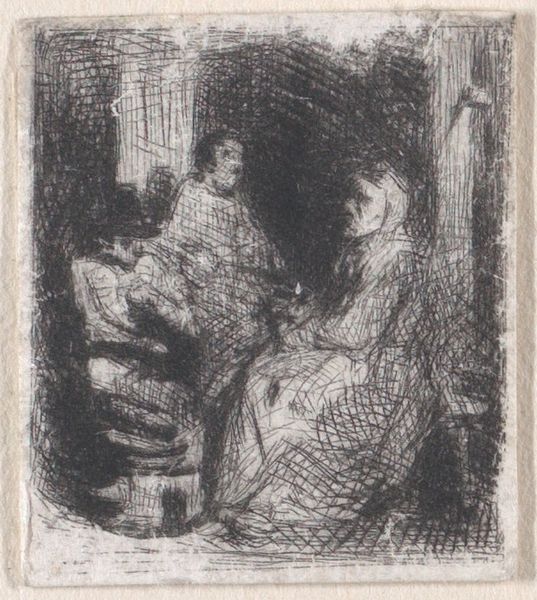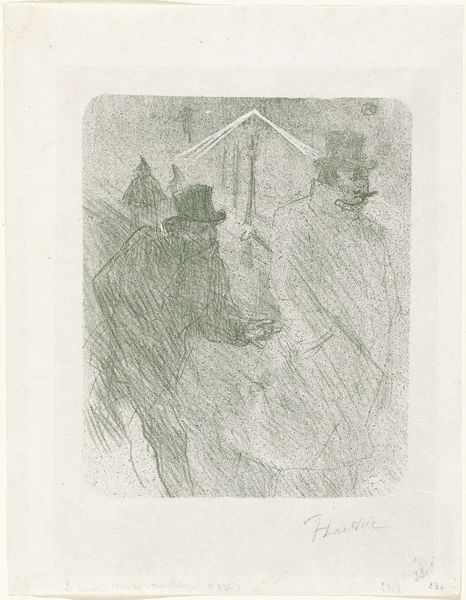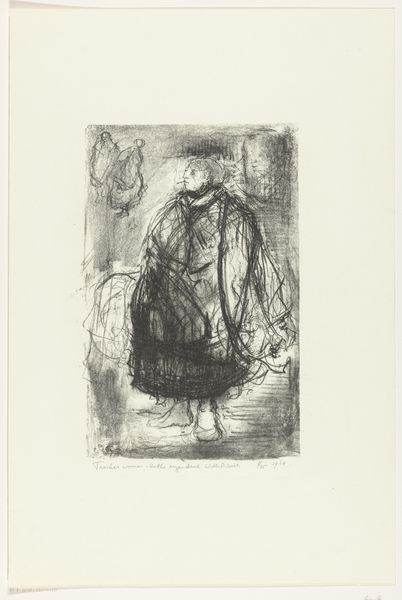
drawing, print, etching
#
portrait
#
drawing
# print
#
etching
#
dress
Dimensions: height 158 mm, width 120 mm
Copyright: Rijks Museum: Open Domain
Curator: We’re looking at “Twee kinderen,” or “Two Children,” a drawing, specifically an etching or print, dating from 1867 to 1913, by Marinus van der Maarel. What are your initial thoughts? Editor: It strikes me as rather melancholic. The gray tones and slightly blurred lines give it a feeling of quiet introspection, even sadness. There is something very withdrawn about the figures' postures. Curator: Interesting. As an etching, it relies heavily on the manual labor involved in the incising and printing processes. Consider the metal plate itself, the tools used to create the lines, and the application of ink. It is, after all, a mechanical reproduction. Editor: Yes, but those lines, seemingly so simple, create a powerful evocation of childhood—a fleeting moment. Their simple dresses become stand-ins for innocence and the passing of time. One wears a vertically striped smock, a typical child’s garment. Striped cloth often represents the warp and weft of society and its influences. Curator: Precisely. The garment is itself a product of specific materials—linen or cotton likely—spun, woven, and then made into clothing through labor, much of it undervalued. The mass production of such items speaks volumes about shifts in industry and social class at the turn of the century. Editor: Yet the fact that they are not looking at us also amplifies their symbolism. It almost becomes a glimpse into an internal world, a quiet conversation between these children about things we can never truly know. Notice how the figure on the right seems almost to recede, like a memory fading. Curator: Indeed. This form of reproductive art was very democratized, reaching audiences beyond the elites and shaping their social ideas. By documenting these ordinary figures, an understanding of work and the growing importance of depicting normal subjects is revealed. Editor: Ultimately, what’s left with me is a sense of poignancy. Van der Maarel captures an emotional depth beyond the everyday materials and labour practices that made this etching possible. Curator: I agree. Investigating the production brings the socio-historical situation to light, while the art transcends it with enduring human emotions.
Comments
No comments
Be the first to comment and join the conversation on the ultimate creative platform.
